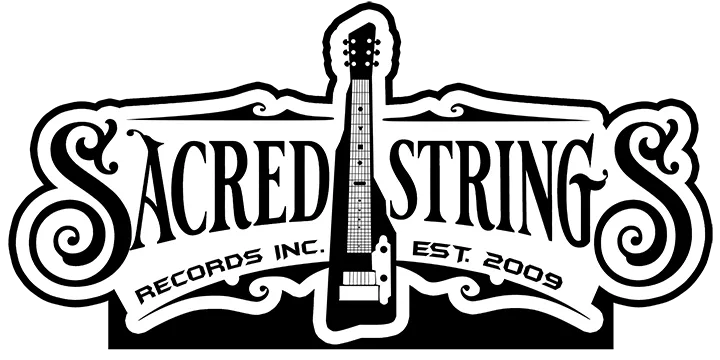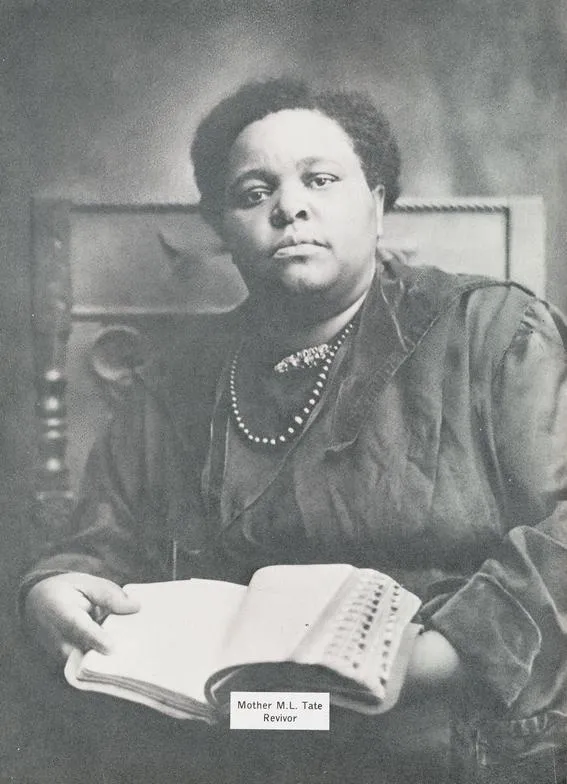History of church Founder
Mother Mary Lena Lewis Tate
Mary Magdalena Lewis Tate was a trailblazing figure in American religious history. She founded The Church of the Living God, the Pillar and Ground of the Truth
in 1903, making her the first African American woman to serve as a bishop in a nationally recognized denomination. Her ministry expanded rapidly, reaching at least twenty states and influencing multiple denominations.
She began her preaching journey in Tennessee and Kentucky, gathering followers into "Do Rights" bands, which later evolved into her church. In 1908, she held a
General Assembly in Greenville, Alabama, where she formally incorporated the
denomination and ordained ministers. Her teachings emphasized cleanness in all aspects of life, from personal habits to social interactions.
Tate also established a publishing house in Nashville in 1923, which printed Sunday School literature, music, and periodicals to support her growing denomination. Her leadership paved the way for women in ministry, ensuring that church positions were accessible to both men and women.
Mary Lena Lewis Tate's journey in ministry took a pivotal turn in 1908 when she experienced a profound spiritual awakening while bedridden. After receiving what she described as the baptism of the Holy Ghost and fire, she was miraculously healed and sprang from her bed, shouting with joy. This transformative event led her to incorporate the Pentecostal belief in speaking in tongues into her teachings.
Her ministry, which she had established with her second husband, Elijah Estes, in 1905, continued to grow rapidly. By 1908, she held a General Assembly in Greenville, Alabama, where she ordained ministers and officially incorporated her denomination. The denomination's expansion into twenty states necessitated a structured approach to leadership and governance. To facilitate oversight, the founder appointed state Bishops to manage churches within their respective jurisdictions, ensuring organizational cohesion and doctrinal integrity. Her sons played integral roles in supporting her mission and leadership efforts.
In a further effort to formalize the denomination, she compiled its doctrines, rules, rituals, and governing structures into a Decree Book, which was then distributed to congregations. This comprehensive document served as a foundational guide for theological consistency, ecclesiastical governance, and operational procedures across the growing network of churches.
Her leadership and theological contributions helped shape the Holiness-Pentecostal movement, making her a significant figure in American
religious history.
Mary Estes married her third and final husband in 1914, Elder Robert Tate, and became known as Mother Tate to this day. While in Philadelphia on church business,
Bishop Mary Lena Lewis Tate died in December 1930 in Philadelphia General hospital after contracting frostbite and gangrene in one of her feet. Following her death in 1930, the church divided into three branches, known as the Keith, Jewell and Lewis dominions.
The steel guitar was embraced in the worship of two of these dominions, the Keith Dominion (officially known as The House of God Which Is the Church of the Living God the Pillar and Ground of the Truth Without Controversy), headquartered in Nashville, Tennessee and the Jewell Dominion (officially known as Church of the Living God, Pillar and Ground of the Truth, Which He Purchased With His Own Blood, Inc.), headquartered in Indianapolis, Indiana. It is within her church organization that the Sacred Steel music tradition was born in the 1930’s.
Bishop Mary Lena Lewis Tate died in December 1930, while on church business in Philadelphia General hospital after contracting frostbite and gangrene in one of her feet. Her story is one of resilience, faith, and groundbreaking leadership and her legacy continues to inspire many in the Pentecostal and Holiness movements.
.
FAQS
What is Sacred Steel?
Sacred Steel is an African-American gospel tradition that features the steel guitar in religious services. It originated in Pentecostal churches in the 1930s
Where did Sacred Steel originate?
It developed in the Church of the Living God, particularly in the Keith and Jewell Dominions.
How did Sacred Steel gain popularity?
Sacred Steel gained wider recognition through performances by artists like Robert Randolph, Calvin Cooke, Aubrey Ghent and the Campbell Brothers, who brought the genre to international fame.
God Bless Sacred Steel!


